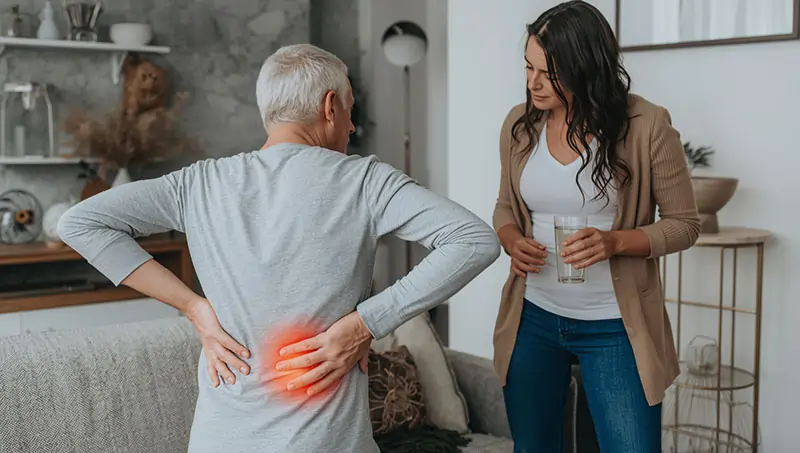Top 5 Causes of Lower Back Pain And How To Fix Them
Lower back pain doesn’t just disrupt your routine—it can take over your life. Whether it’s a dull ache after a long workday or sharp pain that stops you from sleeping, the impact is real. But finding relief starts with understanding what’s causing it.
Let’s break down the top five causes of lower back pain and the proven ways to fix them—especially through targeted, expert-led physical therapy.
1. Poor Posture and Prolonged Sitting
Modern life means sitting for hours—at desks, in cars, or on the couch. This wreaks havoc on your spine. Slumping forward or leaning into one hip places constant pressure on your lumbar discs and supporting muscles.
What’s Causing Your Back Pain? Often, it’s tight hip flexors, weak core muscles, and strained lower back muscles caused by habitual slouching.
How to fix it:
- Strengthen your core and glutes.
- Stretch tight muscles daily.
- Adjust your workspace for better ergonomics.
- Move every 30–60 minutes to reset your posture.
Need expert guidance? Physical therapy for lower back pain focuses on posture correction, mobility, and spinal alignment.
2. Sciatica
If your pain radiates down your leg or causes tingling and numbness, you might be dealing with sciatica. This condition happens when the sciatic nerve gets pinched—often due to a herniated disc, spinal stenosis, or even tight piriformis muscles.
Symptoms to look for:
- Pain that starts in the lower back and travels down one leg
- Burning, tingling, or numbness in the buttocks or thigh
- Discomfort that worsens when sitting
How to fix it:
- Core stabilization exercises
- Gentle nerve flossing techniques
- Postural training
A personalized treatment of sciatica in physical therapy program can reduce nerve pressure and restore normal movement.
3. Weak or Tight Hips
Believe it or not, your hips play a huge role in spinal health. When your hips are tight or unbalanced, your lower back takes on extra strain to compensate during movement.
Why Your Hips Matter: They’re the powerhouse of the body. Restricted mobility or instability here directly impacts how your spine functions.
How to fix it:
- Dynamic hip mobility drills
- Strengthening glutes and hip abductors
- Releasing tight hip flexors and rotators
A skilled PT can design a hip pain treatment plan that supports the spine by improving hip control and flexibility.
4. Lifting with Bad Mechanics
Whether it’s picking up a laundry basket or hitting the gym, poor lifting form is a fast track to back pain. The spine isn’t designed to twist and lift simultaneously—yet that’s exactly how many people move.
Common issues:
- Rounding your back
- Lifting with your back instead of your legs
- Twisting while holding weight
How to fix it:
- Learn proper hinge mechanics (hip-hinge vs. spinal flexion)
- Train leg and core strength
- Use functional movement patterns in therapy and workouts
Physical therapy doesn’t just heal injuries—it teaches safe, long-term movement strategies.
5. Degeneration and Age-Related Conditions
As you age, the discs and joints in your spine naturally wear down. While this doesn’t always cause pain, it can reduce mobility and lead to stiffness, inflammation, or nerve compression.
Conditions may include:
- Degenerative disc disease
- Osteoarthritis
- Spinal stenosis
How to fix it:
- Low-impact strengthening routines
- Manual therapy to improve joint mobility
- Pain management without relying on medication
Again, physical therapy for lower back pain is one of the most effective ways to slow degeneration and stay active.
Final Thoughts
Back pain doesn’t always start in the back. It can stem from your hips, your posture, or the way you move. The good news? You can take control.
With a customized approach from trusted providers like Confluent Health, you’ll uncover the real cause of your pain—and get a plan built to fix it.
Don’t mask pain with quick fixes. Find lasting relief by understanding your body and treating it right, one movement at a time.


